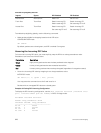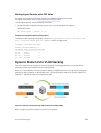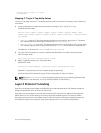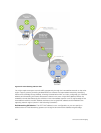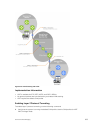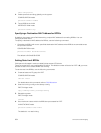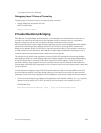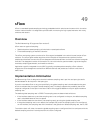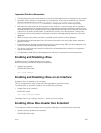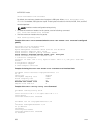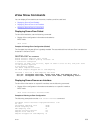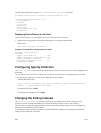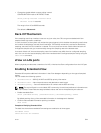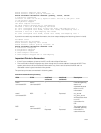49
sFlow
sFlow is a standard-based sampling technology embedded within switches and routers which is used to
monitor network traffic. It is designed to provide traffic monitoring for high-speed networks with many
switches and routers.
Overview
The Dell Networking OS supports sFlow version 5.
sFlow uses two types of sampling:
• Statistical packet-based sampling of switched or routed packet flows.
• Time-based sampling of interface counters.
The sFlow monitoring system consists of an sFlow agent (embedded in the switch/router) and an sFlow
collector. The sFlow agent resides anywhere within the path of the packet and combines the flow
samples and interface counters into sFlow datagrams and forwards them to the sFlow collector at regular
intervals. The datagrams consist of information on, but not limited to, packet header, ingress and egress
interfaces, sampling parameters, and interface counters.
Application-specific integrated circuits (ASICs) typically complete packet sampling. sFlow collector
analyses the sFlow datagrams received from different devices and produces a network-wide view of
traffic flows.
Implementation Information
Dell Networking sFlow is designed so that the hardware sampling rate is per line card port-pipe and is
decided based on all the ports in that port-pipe.
If you do not enable sFlow on any port specifically, the global sampling rate is downloaded to that port
and is to calculate the port-pipe’s lowest sampling rate. This design supports the possibility that sFlow
might be configured on that port in the future. Back-off is triggered based on the port-pipe’s hardware
sampling rate.
The default global sampling rate is 32768. The sampling rates are determined as follows:
• If the interface states are up and the sampling rate is not configured on the port, the default sampling
rate is calculated based on the line speed.
• If the interface states are shut down, the sampling rate is set using the global sampling rate.
• If the global sampling rate is non-default, for example 256, and if the sampling rate is not configured
on the interface, the sampling rate of the interface is the global non-default sampling rate, that is, 256.
To avoid the back-off, either increase the global sampling rate or configure all the line card ports with the
desired sampling rate even if some ports have no sFlow configured.
836
sFlow



